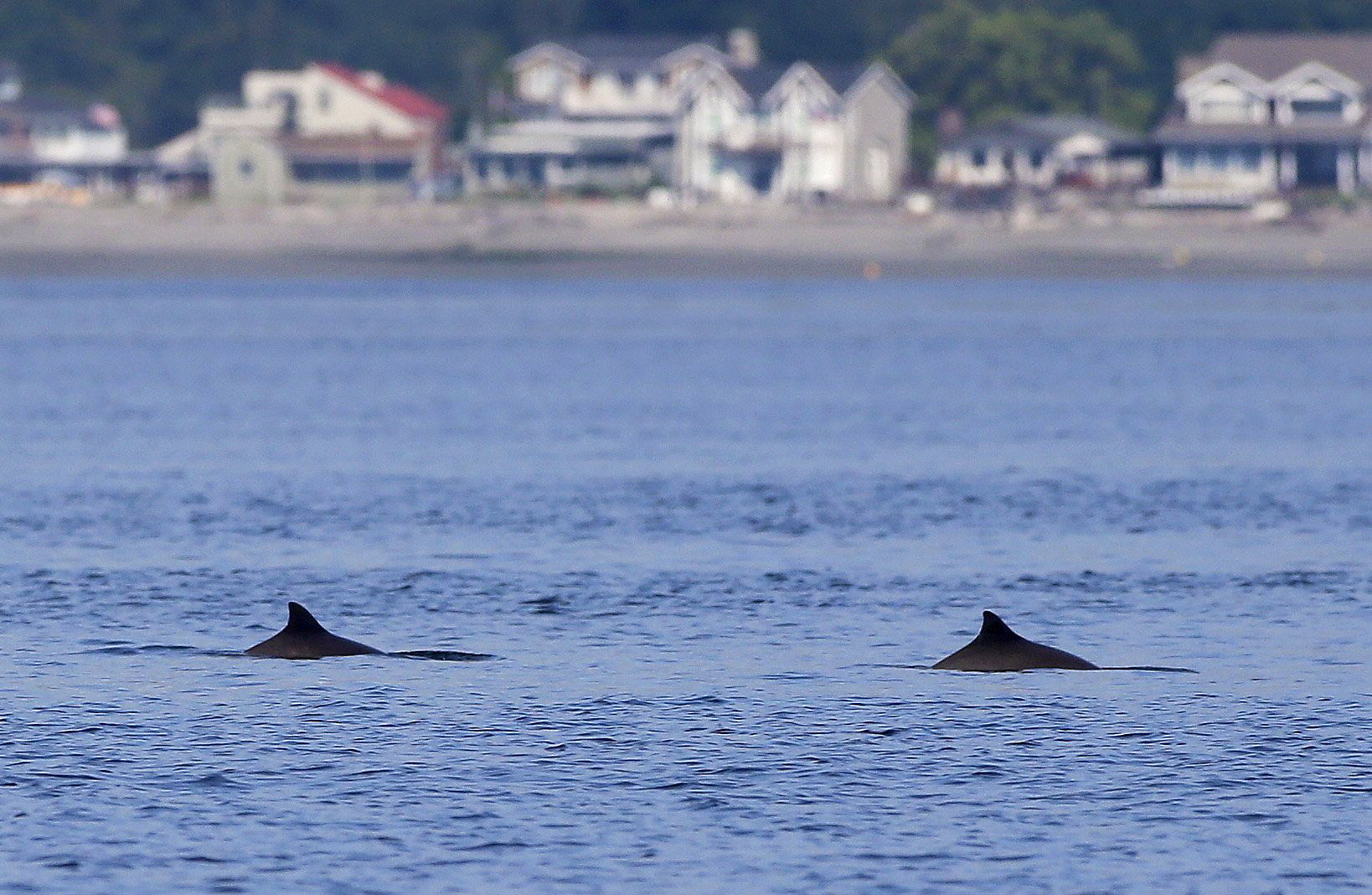SEATTLE — After nearly disappearing from local waters for decades, harbor porpoises are once again a common sight in Puget Sound.”They are back, big time,” says biologist John Calambokidis with the Cascadia Research Collective in Olympia. “They are probably the most common cetacean in Puget Sound.”
Common in our inland waters through the 1940s and ’50s, harbor porpoises virtually disappeared in Puget Sound south of Admiralty Inlet and Hood Canal by the early 1970s.
Entanglement in gill nets, which drowns the air-breathing mammals, vessel noise, and contamination from industrial pollution are all possible culprits, pushing the animals farther north in their range, researchers posit.
But beginning in about 2007, the sight of the quick slipslide of porpoises through the waters of Puget Sound has become common once again. In calm conditions, the animals can be seen everywhere from the Mukilteo ferry dock, to Burrows Pass near Anacortes, to the waters of West Seattle.
Just why isn’t known, but it could be from declines in gill-net fisheries in Puget Sound, as well as ongoing cleanup efforts that have reduced industrial sources of pollution to Puget Sound.
Phocoena phocoena is a distinct species unique to Puget Sound’s inside waters. They live out their lives near ours, foraging herring, smelt and sand lance in shallow nearshore waters, usually less than 500 feet deep. Living 15 to 20 years, females produce a calf each year for most of those years.
They are about the size of a lithe adult woman, at 5 feet and 120 pounds. They are the only cetacean — dolphin or whale — in the Northwest entirely resident to our inland marine waters.
Harbor porpoises have been detected as deep as 770 feet in the waters of the San Juan Islands. But they usually stay near the surface, coming up regularly to breathe. Some say their puffing sounds like a sneeze.
According to a natural history of the harbor porpoise by Joe Gaydos, chief scientist with the SeaDoc Society, a nonprofit marine-conservation science program at University of California, Davis, harbor porpoises are the smallest of 22 species of cetaceans in the Salish Sea and probably one of the few that are resident year-round.
They are easy to confuse with Dall’s porpoise, which are slightly stockier and all black on top, with white flanks along the belly, white-tipped dorsal fins and flukes, Gaydos notes. Or the Pacific white-sided dolphin, which have similar gray backs to the harbor porpoise but also sport white stripes on their sides and a bi-colored and more curved dorsal fin.
Behavior is the big clue here, Gaydos says: Pacific white-sideds travel in bigger groups and are more exuberant, sometimes even leaping from the water and cruising midair.
Scientists have been taking more notice of harbor porpoises of late. A research conference convened on the harbor porpoise in February drew interest from state and federal agencies, as well as nonprofits around the region.
The Pacific Biodiversity Institute, based in Winthrop, Okanogan County, has taken up the cause of the porpoise, advocating for its use as an indicator species of the health of Puget Sound.
Volunteers with the Skagit County Beach Watchers are tracking sightings from headlands, recording porpoise sightings for the institute in two-hour intervals. And the biodiversity institute has deployed two acoustic monitors to track the animals, using buoys to observe harbor porpoise travel paths.
Already, the recorders, which pick up the animals’ distinctive sounds of echolocation, have detected that the porpoises keep to a schedule: about twice as many pings are detected at night, beginning about 6 p.m., until 6 a.m., says Aileen Jeffries, a retired physicist and principal investigator for the institute’s harbor-porpoise project.
“If you think about it, it’s an incredible world, they live in an acoustic world, whereas we live in a visual world,” Jeffries says. “It is fun learning about another creature, it’s humbling.”
She says her volunteer work with porpoises was her retirement gift to herself. “It’s all very nerdy, but I get to do what I want, and this is it.
“This is a sensitive, curious, playful little animal with a personality. They are really intelligent little creatures, and I don’t think we have appreciated them.”
She points out that the last population survey, counting about 10,680 porpoises in Puget Sound, is out of date, occurring in 2002-03.
“We want to set a baseline as a way to follow trends in the population that can be used to realistically assess the stability of the harbor porpoise in Puget Sound,” Jeffries says. Such data could even be used to evaluate the prospect of creating more marine reserves in the sound.
“You can’t protect something unless you know something about it.”
Scientists also are concerned about a spike in strandings, Gaydos says. A stranding is any occasion in which a marine mammal is on land, dead or alive, such as on a beach, on rocks, or a boat ramp or marina.
Until the mid-2000s, statewide annual harbor porpoise strandings were rather consistent, at an average of six animals. But strandings have climbed since then, more than tripling, for reasons that remain unclear.
“Is that just because the population is increasing?” Gaydos says. “Or is there something else going on? He, too, a new stock assessment from NOAA, which monitors marine mammal populations, is needed.
“If they are dying of something and we are missing it, that is really serious. And we don’t have enough data to tell us that.”



